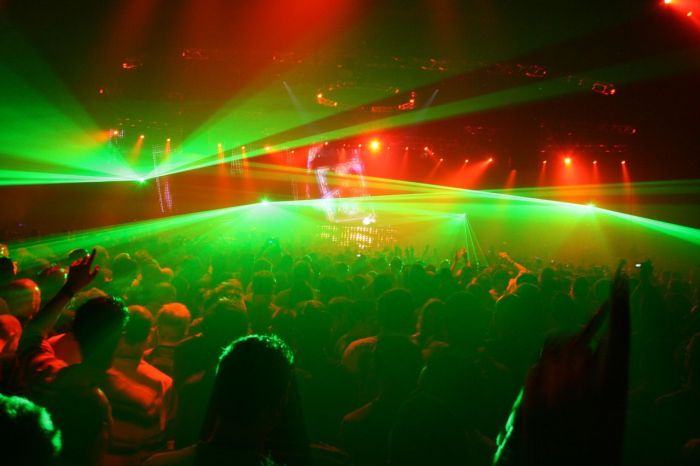|
|
Rave Party Light Show
|
One significant concern associated with MDMA use is toxicity from chemicals other than MDMA in ecstasy tablets. Due to its near-universal illegality, the purity of a substance sold as ecstasy is unknown to the typical user. The MDMA content of tablets varies widely between regions and different brands of pills and fluctuates somewhat each year. Pills may contain other active substances meant to stimulate in a way similar to MDMA, such as amphetamine, methamphetamine, ephedrine, caffeine, or even substituted piperazines or phenethylamines (eg, BZP, TMFPP, 2C-I, etc.), all of which may be comparatively cheap to produce (particularly when legal in particular locales) and can help to boost overall profits. In some cases, tablets sold as ecstasy do not even contain any MDMA. Instead they may contain an assortment of undesirable drugs and substances, such as paracetamol, ibuprofen, etc.
- Ecstasy deaths and legal response
There have been a number of deaths attributed to PMA, a potent and highly neurotoxic hallucinogenic amphetamine, being sold as ecstasy. PMA is unique in its ability to quickly elevate body temperature and heart rate at relatively low doses, especially in comparison to MDMA. Hence, a user believing he is consuming two 120 mg pills of MDMA could actually be consuming a dose of PMA that is potentially lethal, depending on the purity of the pill. Not only does PMA cause the release of serotonin but it also acts as a monoamine oxidase inhibitor, MAOI. When combined with an MDMA or an MDMA-like substance, serotonin syndrome can result. Combining MAO inhibitors with certain legal prescription and over the counter medications can also lead to (potentially fatal) serotonin syndrome.
According to one report in 2000, drug related deaths in the rave scene have caused parents to forbid their children from attending while baby boomers find it implausible to deny these young people from these drugs and entertainment In 2000 parents of one overdose victim, 23 year-old Jamie Britten, expressed a desire for safeguards instead of prohibition. Britten was a newcomer to the rave scene, and died after taking enough ecstasy to make the level in his blood 2.5 mg per liter. Another death, that of 17 year-old Jillian Kirkland is reported to have outraged medical professionals and law makers. This caused federal agents to start an investigation, and eventually a grand jury indicted three men who ran the night club she took the drugs in. Prosecutors used a 1986 law called the Crack House Statute which prohibits maintaining property for the purpose of distributing controlled substances. In a federal probe, undercover Drug Enforcement Administration agents were able to get their hands on as much as 13g of ecstasy. In an attempt to discourage drug use in many of these raves, venue owners and law enforcement are banning some of the rave related items such as glow sticks and pacifiers
|
|









